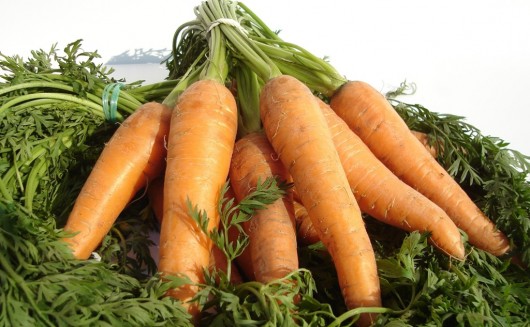Which Fruit Has The Most Phytonutrients?
Phytonutrients play a part in everything from good eyesight to preventing cancer. They are an important part of good health. You can protect and improve your well-being by understanding what phytonutrients are and what they do to help us.
What are Phytonutrients?
Phytonutrients are organic components found in plants. Some good sources are fruits, vegetables, nuts and teas. There are a lot of different classes of phytonutrients including lignans, saponins and phenols. The ones most people are familiar with are carotenoids and flavonoids. Each class of phytonutrients offers different health benefits and has different plant sources they can be found in, so it is possible to eat a wide variety of them.
The Effects of Phytonutrients in Our Bodies
There is evidence that phytonutrients found in fruits and vegetables can protect us from some forms of cancer and macular degeneration. They may work as antioxidants and destroy free radicals. Phytonutrients enhance cell communication and immune responses. They may also destroy cancer cells and repair DNA damage caused by exposure to smoke and other toxins. It is possible they can activate some of our enzyme systems and detoxify carcinogens as well.
Studies have shown that consuming fruits, teas, grains and vegetables with high levels of phytonutrients decreases the risk of strokes and prostate cancer. With heart disease, not only is the risk significantly lower from eating phytotnutrient-rich foods, so is the mortality rate associated with it. Other benefits include lowering cholesterol levels, protecting lung tissue and blocking tumor growth. Research suggests that even making small but consistent increases in the amount of phytonutrients we eat can make a difference in health. Overuse may trigger an allergic reaction in some people or have a mild effect such as a change in skin tone from beta carotene, but overall they are considered safe.
Top Fruits For Phytonutrients Content
The amounts of Phytonutrients are given for 100g of each fruit.
1 Carrot 11.968,00 mcg
2 Pumpkin 7.260,00 mcg
3 Guava 5.578,00 mcg
4 Watermelon 4.921,00 mcg
5 Tomato 3.246,00 mcg
6 Grapefruit 2.178,00 mcg
7 Melon (Cantaloupe) 2.047,00 mcg
8 Apricot 1.306,00 mcg
9 Papaya 1.112,00 mcg
10 Tangerine 801,00 mcg
11 Passion Fruit 784,00 mcg
12 Mango 473,00 mcg
13 Orange 327,00 mcg
14 Peach 320,00 mcg
15 Plum 298,00 mcg
16 Blackberry 246,00 mcg
17 Jackfruit 223,00 mcg
18 Kiwi 209,00 mcg
19 Raspberry 164,00 mcg
20 Mulberry 157,00 mcg
21 Cranberry 127,00 mcg
22 Cherry (sweet) 123,00 mcg
23 Blueberry 112,00 mcg
24 Grape 112,00 mcg
25 Cucumber 94,00 mcg
26 Fig 94,00 mcg
27 Banana 73,00 mcg
28 Apple 67,00 mcg
29 Pear 59,00 mcg
30 Pineapple 35,00 mcg
31 Lemon 35,00 mcg
32 Strawberry 33,00 mcg
33 Durian 29,00 mcg
34 Mangosteen 26,00 mcg
35 Lychee 0,00
36 Pomegranate 0,00
37 Redcurrant 0,00
38 Elderberry 0,00
39 Lime 0,00
40 Gooseberry 0,00
41 Blackcurrant 0,00
